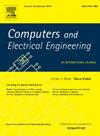Farm-flow dataset: Intrusion detection in smart agriculture based on network flows
IF 4
3区 计算机科学
Q1 COMPUTER SCIENCE, HARDWARE & ARCHITECTURE
引用次数: 0
Abstract
In recent years, the Internet of Things (IoT) revolutionized agricultural management by enabling data-driven decision-making through seamless connectivity among various devices and equipment. The security of Agricultural IoT (AG-IoT) devices becomes increasingly evident as reliance on them grows. On the other hand, machine learning models for intrusion detection show promise in identifying vulnerabilities, but their effectiveness depends on being trained on representative data. Indeed, there is a notable gap in network intrusion detection for AG-IoT, as existing datasets for training machine learning models lack the context of AG-IoT scenarios. Also, most existing ones rely on packed-based features (and not on network flow data), and analysing such data can be resource-consuming.
In this work, we present the “Farm-Flow” dataset. We created a realistic AG-IoT scenario to build the dataset and executed eight types of network attacks. Over one million instances of relevant data were collected, which we combined into network flows, organized and made publicly available via http://doi.org/10.5281/zenodo.10964647.
The dataset created has been evaluated using multiple intrusion detection models in terms of their capabilities to identify and classify malicious traffic. The assessed models presented high performance and even achieved an F1-score of more than 90% while identifying malicious traffic. The “Farm-Flow” may support the training of intrusion detection methods, and the performance results contribute to future benchmarking.
农场流数据集:基于网络流的智能农业入侵检测
近年来,物联网(IoT)通过各种装置和设备之间的无缝连接,实现了数据驱动决策,从而彻底改变了农业管理。随着人们对农业物联网(AG-IoT)设备的依赖程度越来越高,这些设备的安全性也变得越来越明显。另一方面,用于入侵检测的机器学习模型在识别漏洞方面大有可为,但其有效性取决于在代表性数据上进行的训练。事实上,AG-IoT 的网络入侵检测存在明显差距,因为用于训练机器学习模型的现有数据集缺乏 AG-IoT 场景的背景。此外,大多数现有数据集依赖于基于打包的特征(而非网络流数据),而分析此类数据可能会消耗大量资源。我们创建了一个真实的 AG-IoT 场景来构建数据集,并实施了八种类型的网络攻击。我们收集了 100 多万个相关数据实例,将其合并为网络流,并通过 http://doi.org/10.5281/zenodo.10964647.The 进行了整理和公开。我们使用多种入侵检测模型对所创建的数据集进行了评估,以确定其识别和分类恶意流量的能力。经过评估的模型表现出很高的性能,在识别恶意流量时的 F1 分数甚至超过了 90%。农场流 "可为入侵检测方法的培训提供支持,其性能结果有助于未来的基准测试。
本文章由计算机程序翻译,如有差异,请以英文原文为准。
求助全文
约1分钟内获得全文
求助全文
来源期刊

Computers & Electrical Engineering
工程技术-工程:电子与电气
CiteScore
9.20
自引率
7.00%
发文量
661
审稿时长
47 days
期刊介绍:
The impact of computers has nowhere been more revolutionary than in electrical engineering. The design, analysis, and operation of electrical and electronic systems are now dominated by computers, a transformation that has been motivated by the natural ease of interface between computers and electrical systems, and the promise of spectacular improvements in speed and efficiency.
Published since 1973, Computers & Electrical Engineering provides rapid publication of topical research into the integration of computer technology and computational techniques with electrical and electronic systems. The journal publishes papers featuring novel implementations of computers and computational techniques in areas like signal and image processing, high-performance computing, parallel processing, and communications. Special attention will be paid to papers describing innovative architectures, algorithms, and software tools.
 求助内容:
求助内容: 应助结果提醒方式:
应助结果提醒方式:


